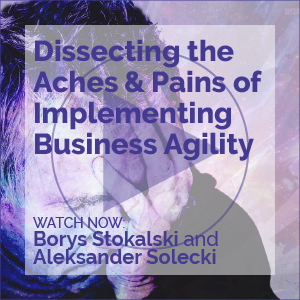A Sourcing Strategy for Flexible IT
A Sourcing Strategy for Flexible IT
Itinerant Internet Executives
Itinerant Internet Executives
E-Commerce and Retail
E-Commerce and Retail
Innovation Is Key to E-Project Management
XML, Xdocs, and the Future of Desktop Computing
While the rest of technology marketplace has been in the toilet, Microsoft has been chugging along. Maybe not at a record pace, but it's been minting money. Last time I looked, Microsoft had over $40 billion in cash. Pretty good in a really down market.
Decisionmaking
"That one decision-gradient diagram was the most important piece of the two-day consulting session," said a product development VP client recently.
"It's difficult to speed up development when management takes weeks to make key decisions," laments a Dublin, Ireland, development group whose company executives are in Silicon Valley.
Why Outsourcing Vendors Almost Always Have an Advantage
WHY OUTSOURCING VENDORS ALMOST ALWAYS HAVE AN ADVANTAGE
How Do New Technologies Get Used?
How Do New Technologies Get Used?
The IT Decisionmaking Process Needs Revamping
I met with some IT managers recently to discuss concerns over a decision to revamp enterprise-wide business processes and systems. These managers did not make this decision, yet they were responsible for implementing it. They felt that deploying a software package as a way to revamp their business was an ill-conceived strategy and that the project plan was not viable.
Integrate 2001
The Object Management Group (OMG) has just announced that it's back in the conference business. It will sponsor INTEGRATE 2001. The conference, which aims to attract about 2,500 attendees, will be held in New York City on 19-21 September 2001.
Plan for Success, Then Plan for the Blues
We often experience depression after a success. As IT managers, we can accept these postsuccess blues and deal with them, or we can ignore them and suffer the consequences. We need to plan for success and for the blues that can follow.
Integrate 2001
Integrate 2001
Plan for Success, Then Plan for the Blues
Plan for Success, Then Plan for the Blues
The Good, the Bad, and the Data Quality
Continuous Partial Attention and Software Productivity
It's been said that the great science fiction writer Isaac Asimov had 10 typewriters in his basement for the multitude of writing projects that he engaged himself with. It's also been reported that the average person can effectively handle only about four concurrent tasks at once, with the maximum being about seven. Clearly, Isaac Asimov was a rare exception in humankind.
Telecommuting Still Has a Long Way to Go
After Action Reports
When lives are at stake, it pays to learn quickly. The US Army -- in fact, most military and police forces -- uses the concept of an After Action Report (AAR) to promote learning and knowledge transfer. In her recent book, Common Knowledge, author Nancy Dixon characterizes AARs as a form of Serial Transfer of knowledge -- that is, transferring information within a single team, over time.


